Bean Geese
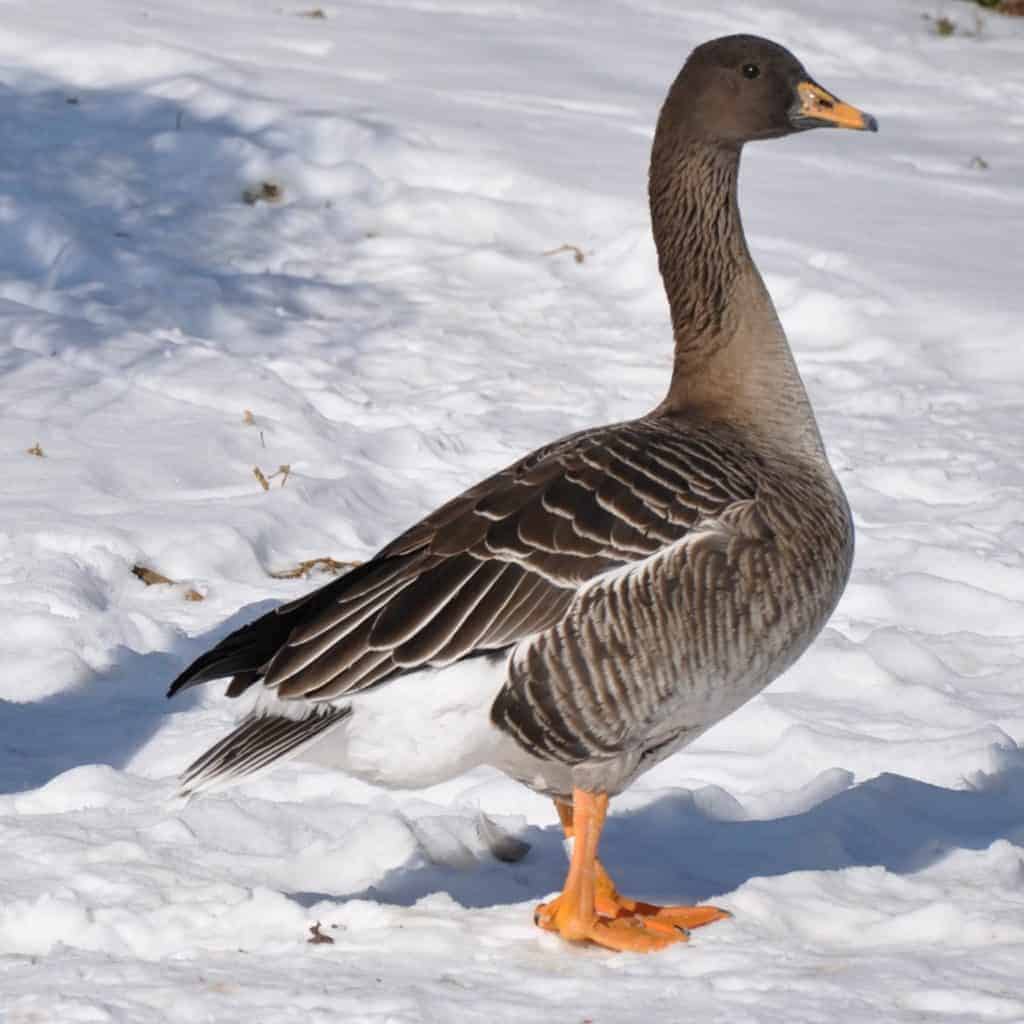
There are three subspecies of Taiga Bean Goose
Anser fabalis recognised:
- Western A. f. fabalis — Large brown goose with long neck and comparatively long, thin bill. Black and orange bill, orange legs; darker on head than other grey geese within range. Breeds western Eurasian taiga; winters western Europe.
- Johansen’s A. f. johanseni — Intermediate in size between nominate and middendorffii; less orange on bill than former. Breeds central Eurasian taiga; winters Turkmenistan and Iran east to western China.
- Middendorff’s A. f. middendorffii — Largest ssp., with long and moderately deep black bill with restricted amount of orange. Breeds eastern Eurasian taiga; winters eastern China to Japan.
The Tundra Bean Goose A. serrirostris has two subspecies:
- Russian A. s. rossicus — Smallest bean goose, with short, comparatively stout bill with orange confined to band over upper mandible. Breeds north-western Siberian tundra; winters west and central Europe and south-west Asia.
- Thick-billed A. s. serrirostris — Similar in size to A. f. johanseni, with very deep bill, and orange confined to band behind nail. Breeds north-eastern Siberian tundra; winters eastern China, Korea and Japan.
Some modern publications list all five subspecies above as Anser fabalis, as work on these taxa is still ongoing. We follow the taxonomy of the IOC World Bird List.
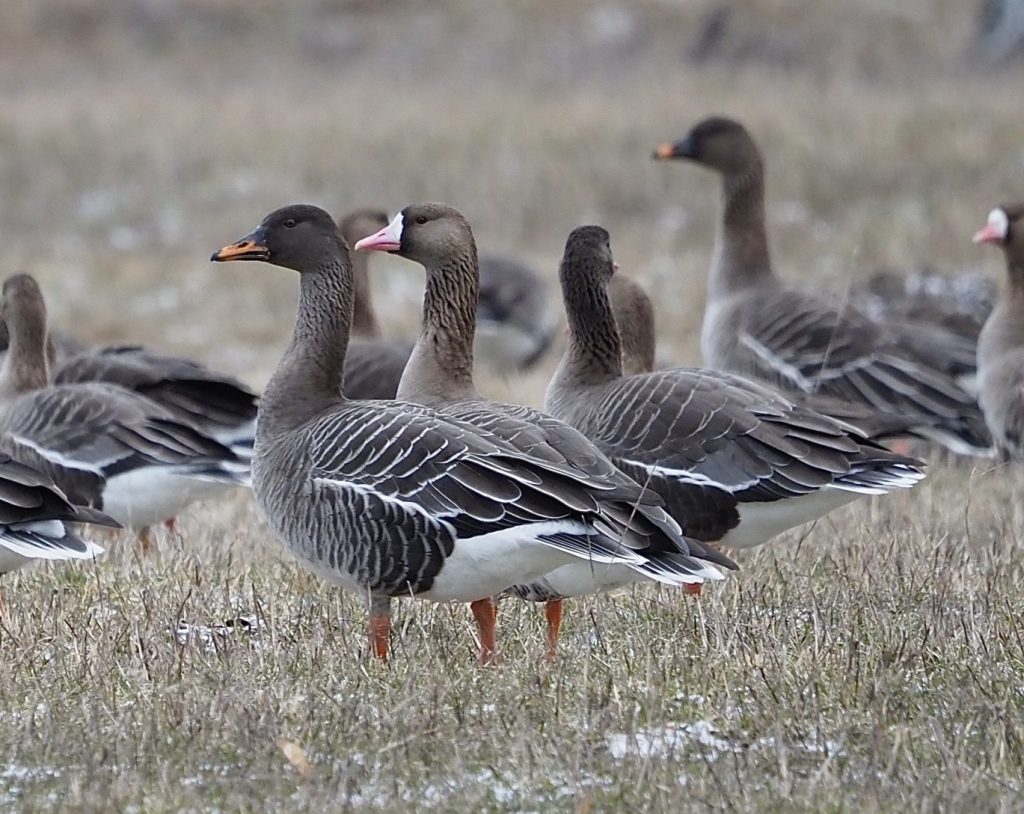
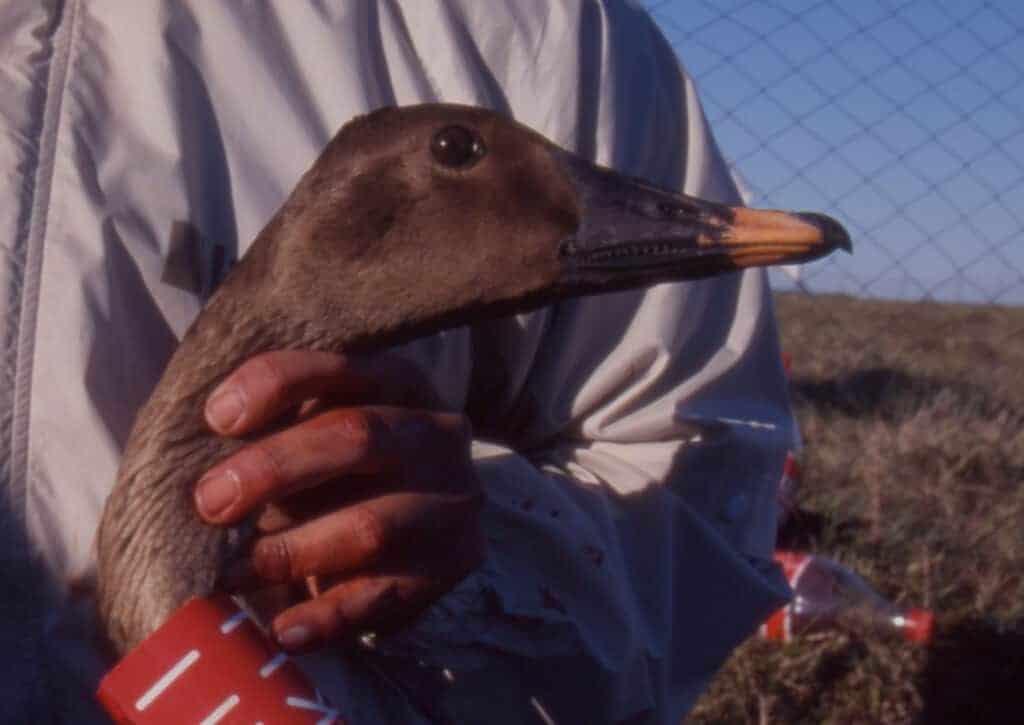
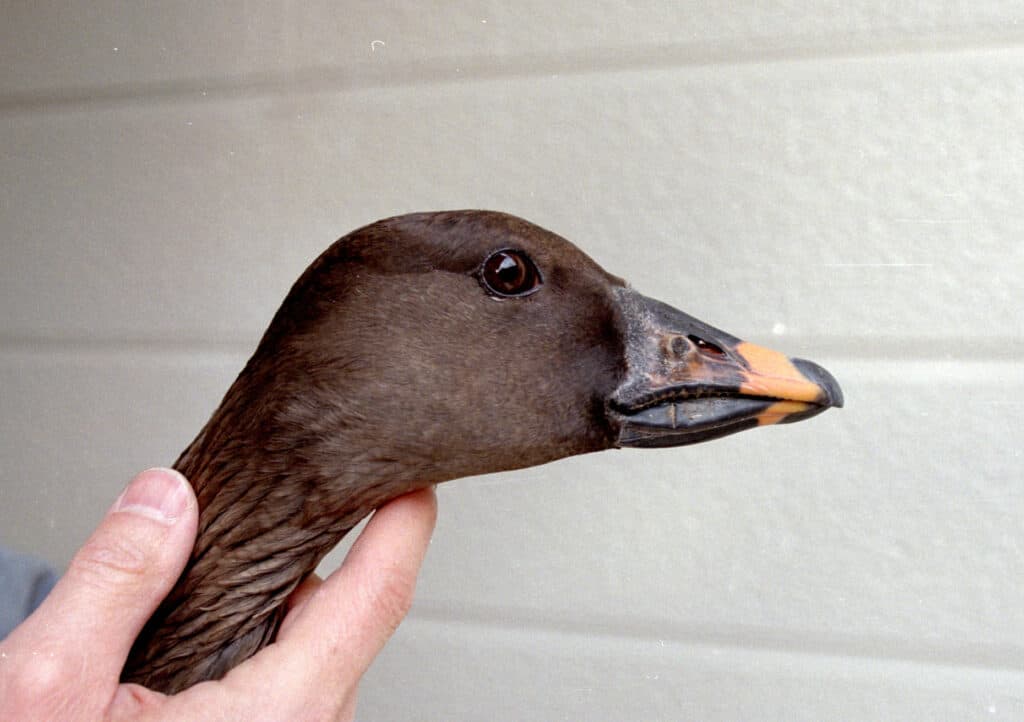
Anser fabalis & A. serrirostris
The nominate subspecies of Taiga Bean Goose, the Western Bean Goose A. f. fabialis is common in collections and is easy to maintain here. The remaining four subspecies of Bean Geese are not considered so.
They should be fed grain and pellets as well as being provided with good grazing.
The Taiga Bean Goose is a bird of the high Arctic or taiga, where it favours lakes, pools, bogs, swamps, wet meadows and sluggish rivers. Bean Geese also move to marshes and agricultural land in winter. The Western Bean Goose breeds in the taiga from western Siberia to Scandinavia, it winters in Western Europe with small numbers regularly occurring at sites in Scotland and eastern England.
Superficially, they look similar to their closest relative, the Pink-footed Goose Anser brachyrhynchus, but have warmer, more brown plumage. The key differentiating feature is leg colour. The yellow-orange patch on the bill usually covers more than half in Taiga Bean Geese.
The Western Bean Goose was uplisted from Amber to Red in Britain in 2015 as it is classified as globally threatened. This is due to its declining population, which is heavily dependent on active habitat management in the UK.
The combined wintering UK population of both species numbers less than 900 individuals, which is the threshold for counting as a rarity. As a result, the Russian Bean Goose is Amber-listed in Britain.
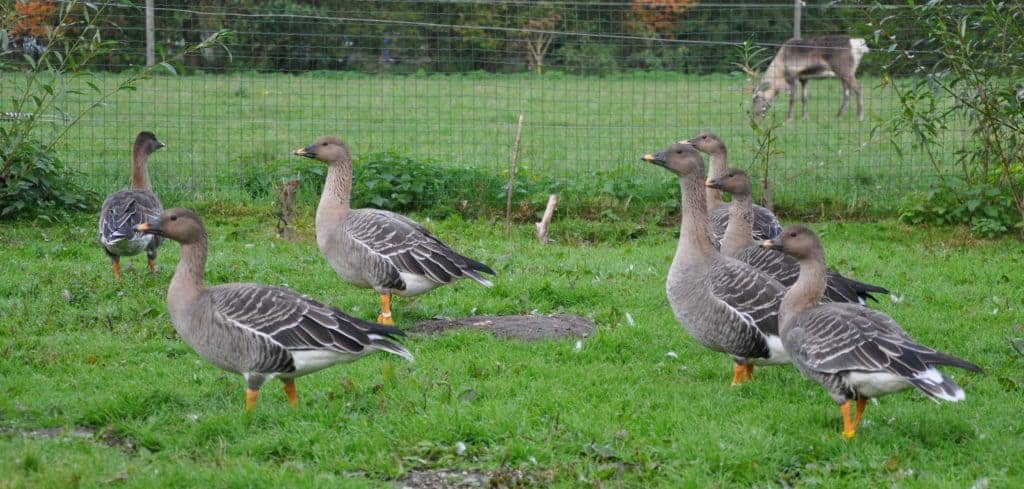
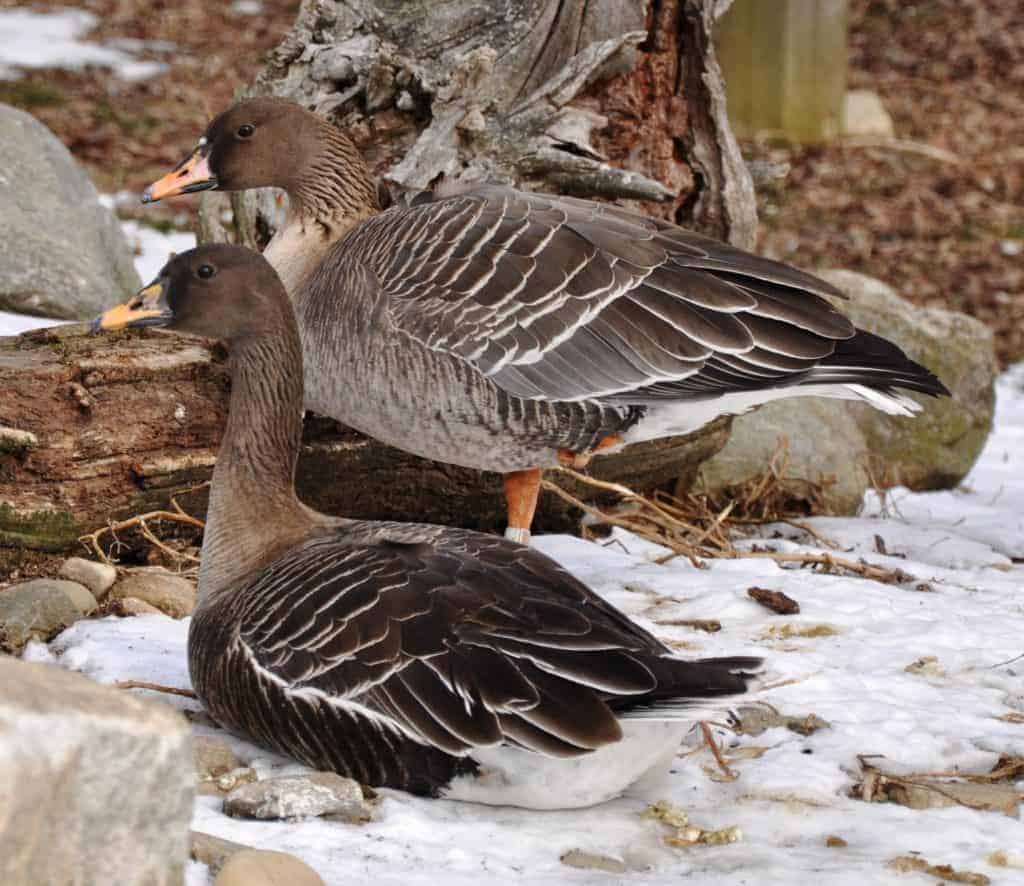
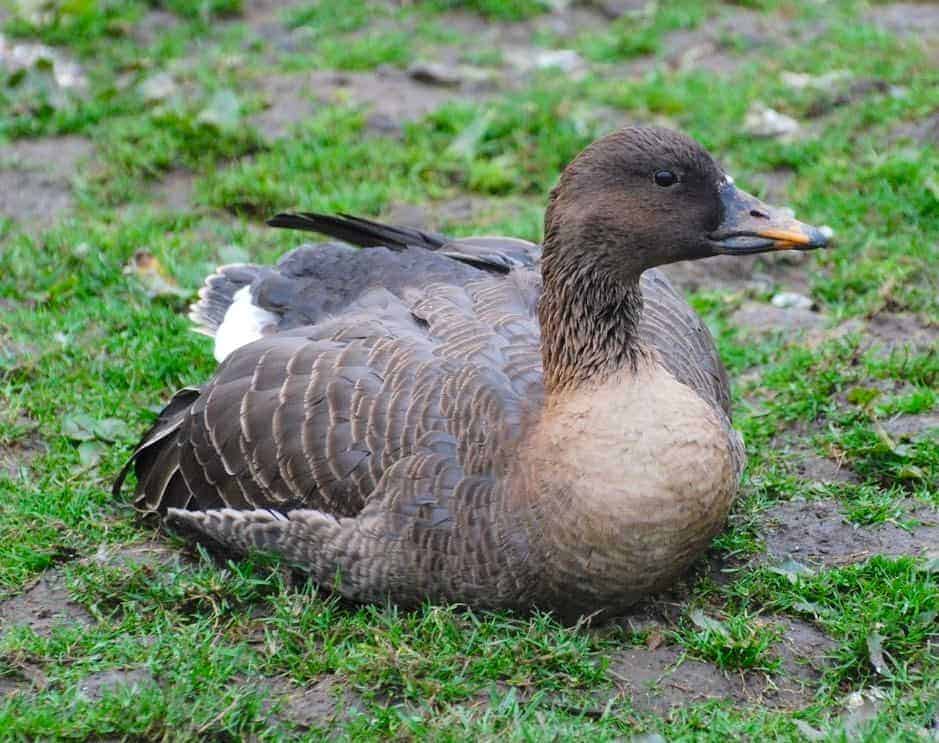
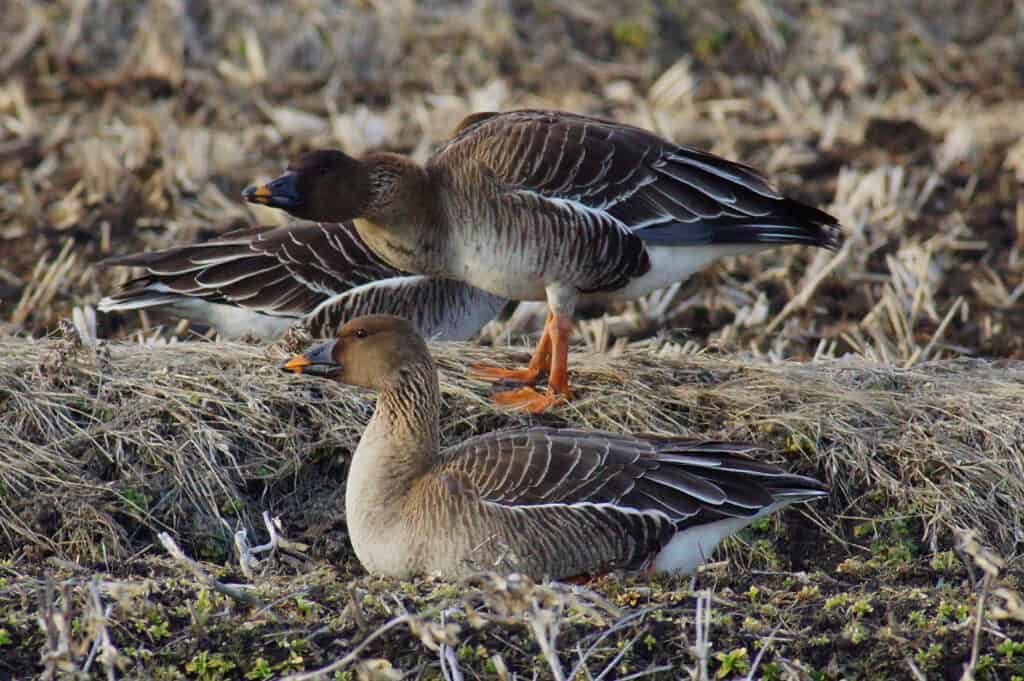
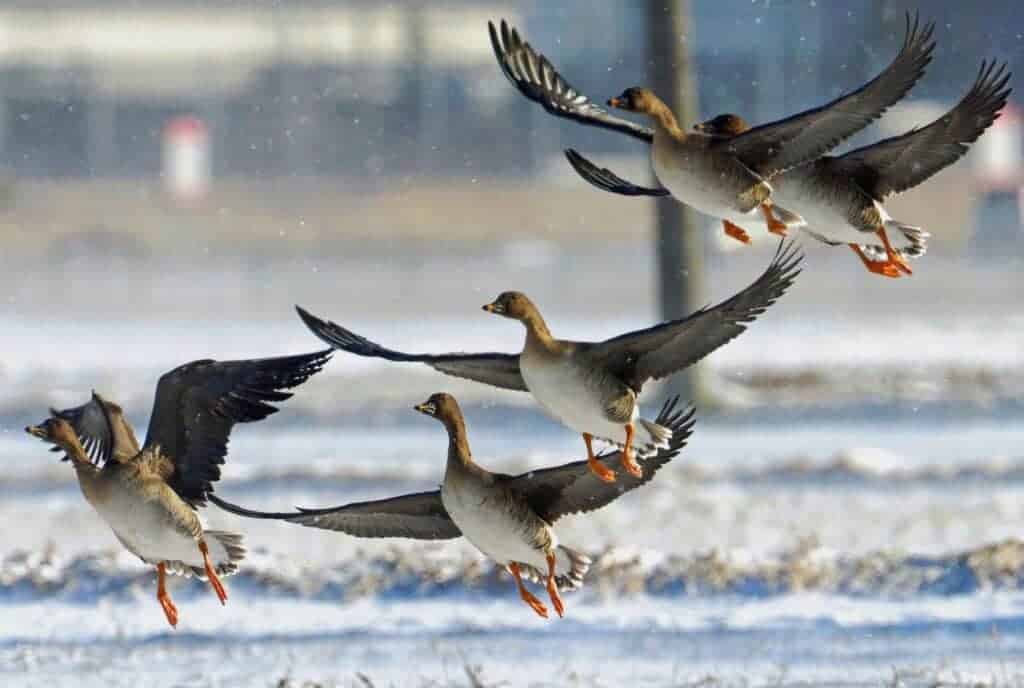
An average of 4–6 white to pale straw-coloured eggs are laid in a scrape or shallow nest of vegetation. The nest is lined with down. Incubation is 25 to 29 days. It is worth noting that the bean geese can interbreed with several other geese including the Greater White-fronted Goose Anser albifrons, Greylag Goose Anser anser, Pink-footed Goose Anser brachyrhynchus, Snow Goose Anser caerulescens, Barnacle Goose Branta leucopis and of course, the other species of bean goose.
FURTHER READING
Ottenburghs, J., Honka, J., Müskens, G.J.D.M. et al. Recent introgression between Taiga Bean Goose and Tundra Bean Goose results in a largely homogeneous landscape of genetic differentiation. Heredity 125, 73–84 (2020). https://doi.org/10.1038/s41437-020-0322-z